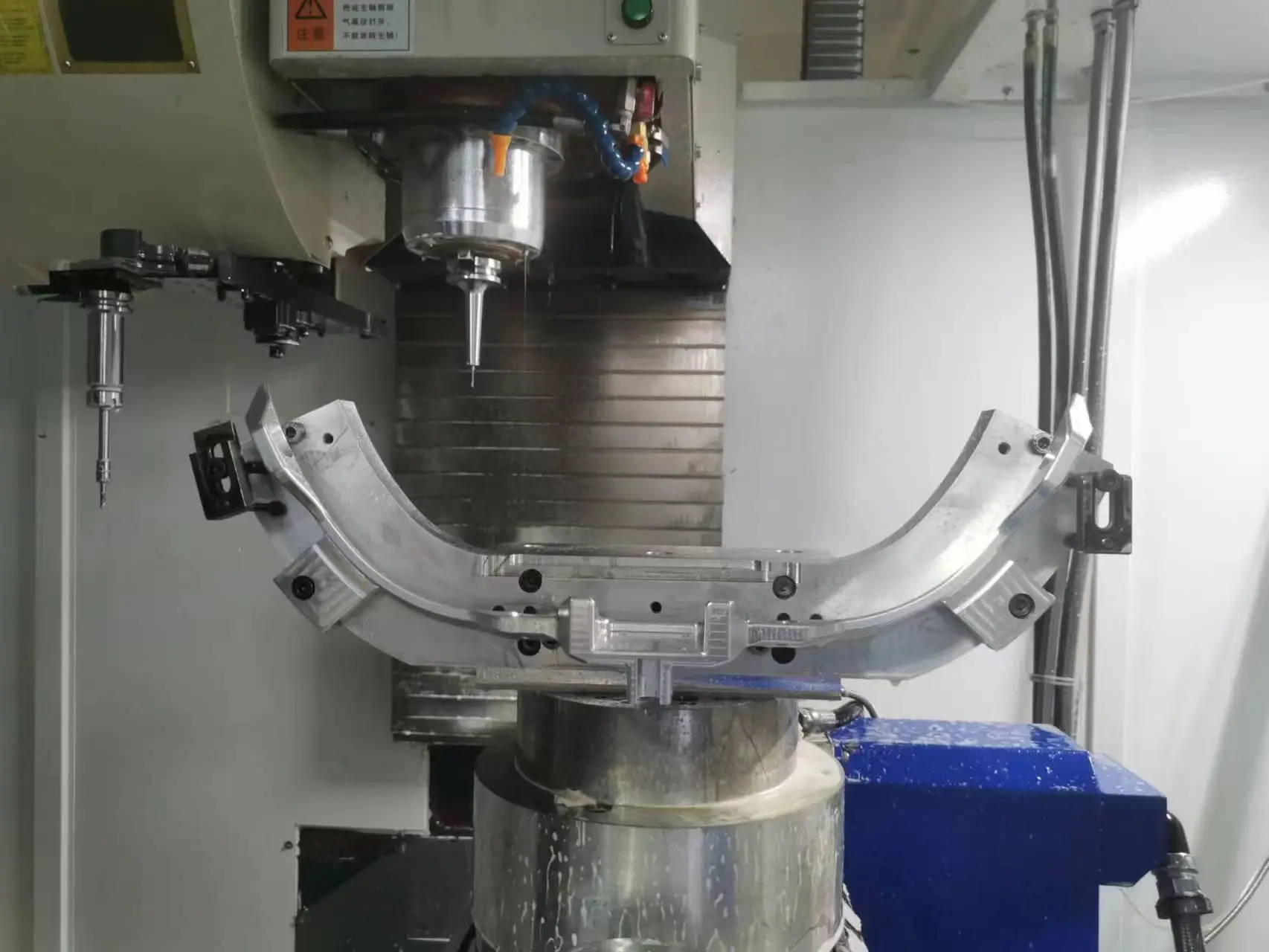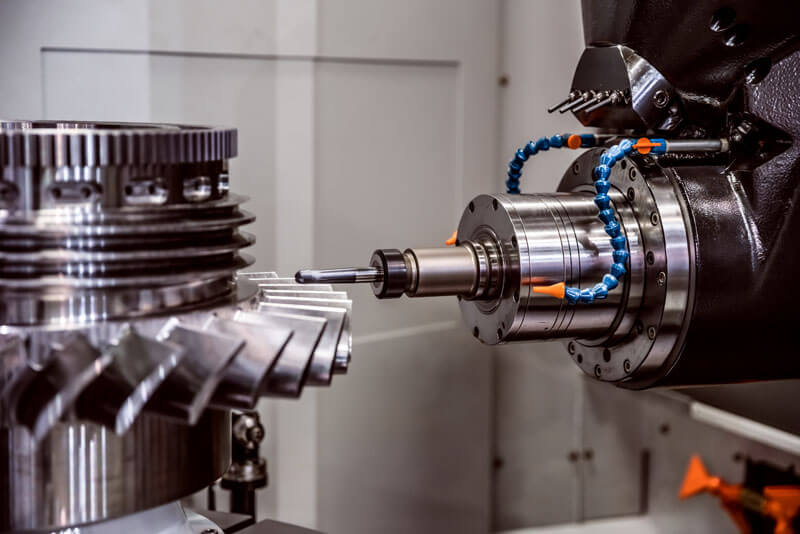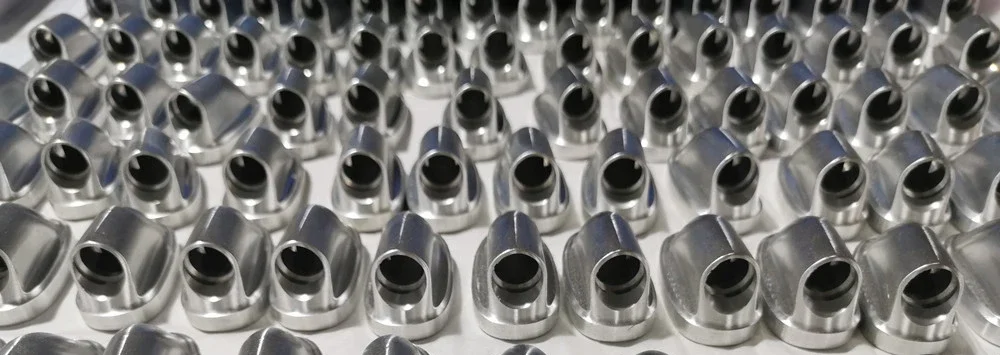5 Axis CNC Machining: Definition, Benefits and Types
Updated: December 04, 202
CNC machining is a versatile process, and manufacturers have to choose the most appropriate CNC setup for it. Nowadays, CNC units are presented with lots of options for multi-axis machining. The most popular of them are centers for 5-axis machining.
What does machining in 5 axes mean, and what benefits does it bring? Let’s find answers to these and other questions.
1. What is 5-Axis CNC Machining?
5-axis CNC machining is subtracting manufacturing that involves using 5-axis machines. These rely on cutters that move in five different directions — X, Y, Z, A, and C.
The first three are the regular dimensions in which 3-axis machines move. These enable the spindle with the cutter to move along the long side (left to right), short side (front to back), and up and down. It’s the minimum required for matching.
A and C (may have any other symbolic indications) are the dimensions in which the cutter rotates. It helps to achieve a wide range of applying the cutting force. These dimensions enable not to rearrange the workpiece and form more intricate shapes and designs.
You may take a look at what 5-axis CNC machining centers may look like in the image below.
The cutting tool and the workpiece placed on a rotary table may both move during operations. It significantly saves time and increases the number of operations that are possible to perform.

2. Benefits of 5 Axis CNC Machining
The processes with 5-axis CNC machines beat 3–axis ones in many ways. Here are some of the strengths of the 5-axis approach.
- Single setup. As mentioned, a 3-axis machine requires multiple rearranges to produce a single part. Alternatively, there is the need to place several such machines to produce a component. The 5-axis machining center, on the opposite, grants you the ability to complicated machine shapes with a single setup. It improves efficiency, reduces turnaround time, reduces costs, and prevents human error.
- Shorter cutting tools. 5-axis CNC milling machines take advantage of the shorter cutters that 3-axis centers do. It’s simply because they can lower the head and orient the cutter as necessary. This nuance is beneficial simply because a shorter cutter can withstand higher cutting speeds and more pressure on the cutter. Such tooling is also less prone to vibration chatter.
- More intricate designs. 5-axis work enables you to produce complex parts that overwise would require casting. Such machining is also more appropriate for rapid prototyping due to the shorter setup time.
- Higher tool lifespan. Using a 5-axis machine enables you to maintain the constant chip load and optimal cutting position. It positively affects the life of your tooling.
- Time-effective hole drilling. The 5-axis machine enables you to drill a series of holes with compound angles promptly. The reason is the same — no extra setup is needed.
3. Types of 5-Axis CNC Machining
There are three types of 5-axis machining techniques you may utilize. Here is some basic info on what they are.
Full 5-axis CNC
This is the technique which you purchase the 5-axis machining center for. It’s the simultaneous 5-axis machining that allows for using the three linear axes plus two rotary axes at the same line.
The main advantage of this technique is the versatility and the design intricacy you may achieve. Most manufacturers prefer not to switch between techniques of 5-axis machining as a full 5-axis approach gives you pretty much everything you may need.
3+2 Machining Centers
3+2 is the technique that involves using a three-axis milling program executed with the cutting tool locked in a tilted position. It’s called “positional 5-axis machining” because of fourth and fifth axes just orient the cutting tool in a fixed position rather than manipulate the spindle.
The advantage of this technique is the use of a shorter, rigid cutting tool. The spindle head can be lowered closer to the workpiece and angled toward the surface. It helps to achieve higher speeds and more power.
4+1 Machining Centers
4+1 machining using a 5-axis machine is a simplification of the full 5-axis machining. It implies that you have your pivot axis locked while actively using the rotary axis.
This approach helps to improve dynamics and take advantage of the higher-performing rotary axis. Fixation of one axis is achieved using programming in opposition to mechanically “fixing” one of the axes.

4. Process of 5-Axis CNC Machining
4.1. Choose a Machine or a Machine + Rotary
In the market, there are two main configurations of 5-axis CNC machines:
- Swivel-Rotate-Style. Such machines utilize the rotary axes by rotating the spindles. It’s a more appropriate style for machining heavier parts.
- Trunnion-Style. Such machines have a movable table. It helps them to machine large volumes since a spindle takes up no space.
And two main types of CNC machines:
- Horizontal. These machines are typically equipped with a pallet changer. They tend to be heavier and more rigid. Normally, horizontal machines support the cutting of the most durable raw materials like titanium or Inconel materials. They have effective metal chip disposal since they free fall into the conveyor.
- Vertical. These machines are way more agile for processing smaller components. The vertical clamping is easier to handle for operators. Yet, the chip evacuation should be closely monitored with vertical units.
You use a swivel-rotate machine for heavy-duty work and a trunnion, a vertical machine for a large number of smaller components.
4.2. Pick Your Tools
Then you need to get an idea of what you are going to cut and with what type of machine. Are these 5-axis mills or turning centers you are going to use?
Here are the types of cutting tools you are likely to use.
Drill bits.
End and face mills.
Reamers.
Gear cutters.
Hollow mills, slab mills, and thread mills.
Fly cutter.
And the four materials you may use for CNC cutters:
Carbon steel.
High-speed steel.
Carbide.
Ceramic
There is no single successful combination of a tool and its material. Make your choice based on the scope of the application.
4.3. Hold On Tight
The most suitable tool holder system is either BBT or HSK. They eliminate vibrations and increase tool life. They do not deteriorate surface qualities as well. Besides, they provide the best bonding between the spindle and the tool holder under any condition.
As for work-holding technology, you may go with a self-centering vise, which would adjust itself and have high holding power. Or, you may choose a dovetail system that decreases the distortion and locates all the parts in the same way for a more consistent load. You may also use tombstones or fixture blocks for some applications.
4.4. Program Away
You need some G-code programming to make your best 5-axis CNC machines work. When programming such a machine, you should command rotary moves and position. You may input the data using either rotary angles or tool vectors.
The IJK tool vectors make a program independent of any machine configuration since you do not especially command any axis. That’s why you’re recommended to go with this approach.
Anyway, to execute some programming, you’ll need CAM software. The program in which you write or let the machine automatically compute your G-coded files. Use Fusion 360, FreeCAD, OpenBuilds CAM, or any other software of your choosing.

5. Summary
5-axis machining is considered effective enough to suit most applications. 5-axis machines have 3 linear axes and 2 rotary axes. This specificity enables them to remove the material of a workpiece at unusual angles. It significantly speeds up the machining process and increases the pool of supported designs.
You have a choice between 5, 4+1, and 3+2 techniques of machining. Besides, you may choose different types of forms of CNC machines to cover your purposes better. Aspects such as choosing a cutter or a vise system also matter.
As a professional CNC machining supplier, Ecoreprap can offer 5-axis CNC machining with an affordable cost. Feel free to contact us if you have a new project.


